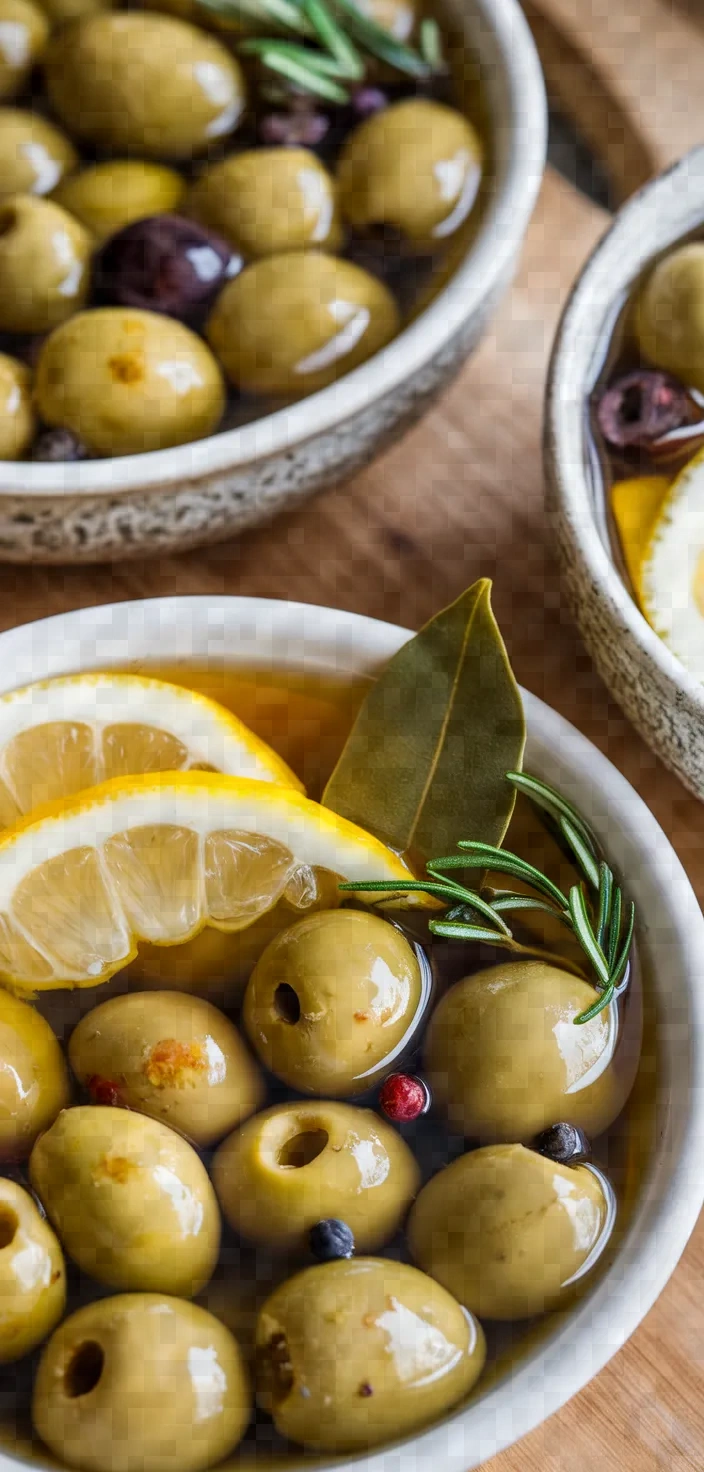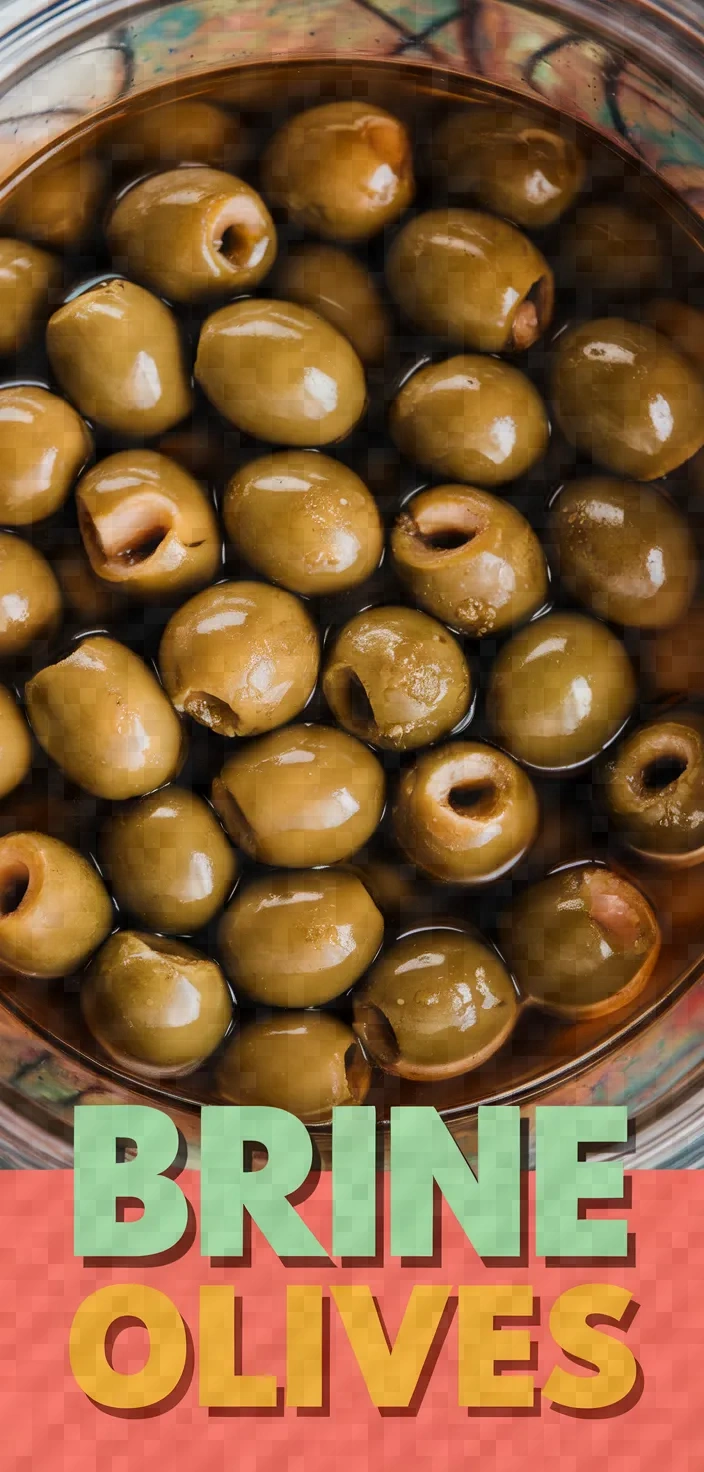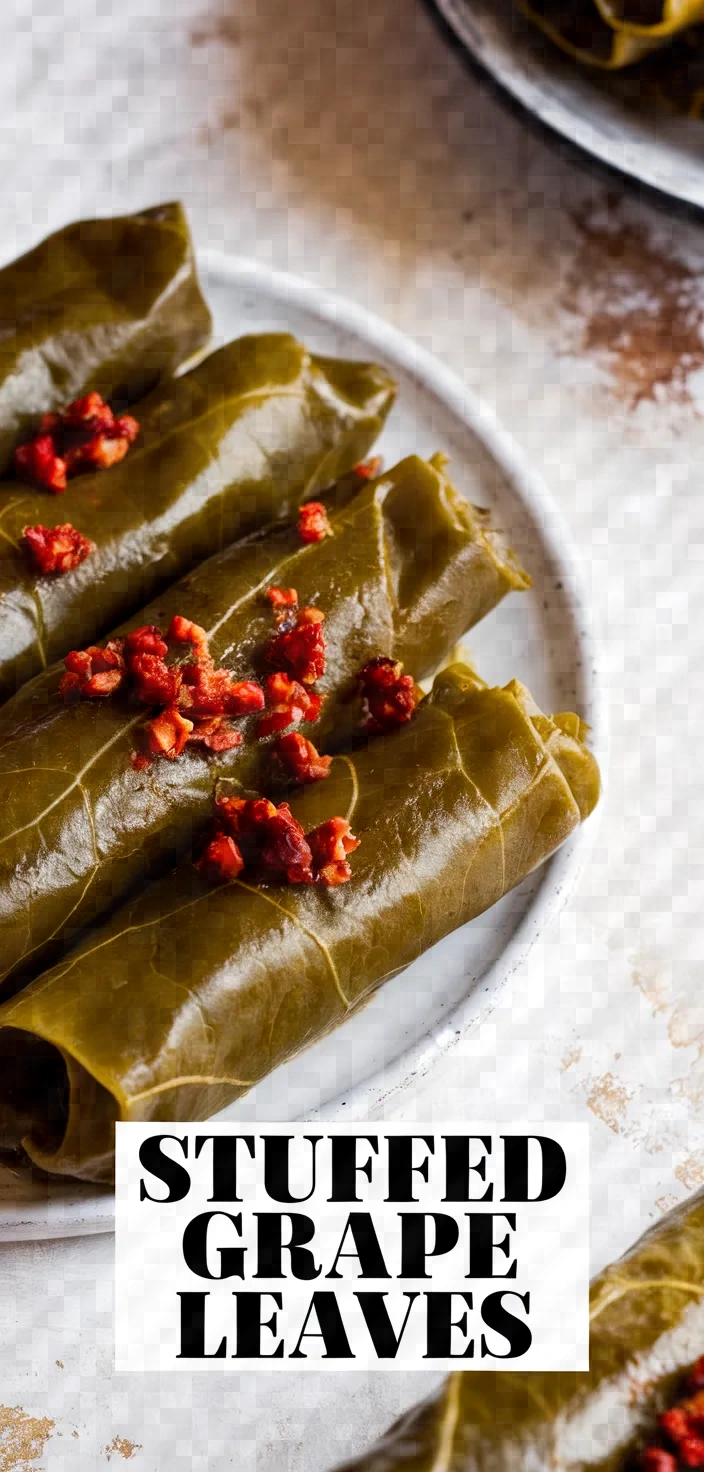Diving into the world of homemade olives feels like an adventure in flavor, taking the simple fruit and transforming it into a briny masterpiece that’s bursting with personality. Let’s embark on this salty, herby journey together!

I adore changing raw olives into a boatload of deliciousness that almost explodes in my mouth. I use a few simple English staples—kosher salt, garlic, and the fresh herbs you see in front of me—to create a savory blend that gives the olives an olive-y flavor.
I then pack them into a jar, cover them in olive oil, and let them sit in the fridge for a week. After that, they’re good to go for about a month.
How To Brine Olives Recipe Ingredients

- Fresh Olives: Packed with healthy fats and antioxidants.
- Water: No calories; hydrates and dilutes the brine.
- Kosher Salt: Essential for brining; enhances flavors.
- White Wine Vinegar or Apple Cider Vinegar: Adds acidity, aiding fermentation and preservation.
- Garlic Cloves: Adds flavor and natural antimicrobial properties.
- Fresh Rosemary or Thyme: Provides aromatic, earthy flavor.
- Lemon Slices: Adds brightness and tangy freshness.
- Crushed Red Pepper Flakes: (Optional) Adds a hint of heat.
- Black Peppercorns: Infuses a mild spicy depth.
- Bay Leaf: Provides subtle aromatic hints.
How To Brine Olives Recipe Ingredient Quantities
“`html
- 2 pounds fresh green or black olives
- 8 cups water
- 1 cup kosher salt
- 1/2 cup white wine vinegar or apple cider vinegar
- 4 garlic cloves, peeled
- 2 sprigs fresh rosemary or thyme
- 2 tablespoons lemon slices
- 1 teaspoon crushed red pepper flakes (optional)
- 1 tablespoon whole black peppercorns
- 1 bay leaf
“`
How to Make this How To Brine Olives Recipe
1. Prepare the Olives:
Wash the whole olives in cold water to remove any dirt or debris. Using a sharp knife, make several small cuts in each olive; this will allow them to absorb the brine.
2. Dissolve the Salt:
In a bowl that is non-reactive and large enough to hold everything, combine the 8 cups of water with 1 cup of kosher salt. Make sure to stir until the salt is totally and completely dissolved. This is your brine solution.
3. Soak the Olives:
Put the olives into a big glass jar or a container that won’t react with the brine. Pour the brine over the olives, making sure that they are completely underwater—use a clean plate to hold them down if you need to. This was our method for tasting the brined olives after they had been in the brine for an appropriate amount of time.
4. Initial Brining:
Let the olives soak in the brine for 1 week, changing the brine every day to remove the bitterness. To change the brine, drain the old brine, then rinse the olives and the container. Fill with fresh brine, using the same salt-to-water ratio.
5. Prepare Flavored Brine:
One week later, make a flavored brine. Mix 1 cup of kosher salt in 8 cups of water, then mix in 1/2 cup of white wine vinegar or apple cider vinegar; 4 unpeeled garlic cloves; 2 sprigs of rosemary or fresh thyme; 2 tablespoons of lemon slices; and 1 teaspoon of crushed red pepper if using. Finish with 1 tablespoon of whole black peppercorns and 1 bay leaf.
6. Secondary Brine Soak:
Remove the olives from their liquid and rinse well in running water. Return the olives to a clean container and pour in the prepared flavored brine. If necessary, add more brine (or extra liquid) to ensure that the olives are all completely submerged.
7. Marinating Period:
Tightly seal the container and store it in a cool, dark place for at least 2-4 weeks. This permits the flavors to completely develop and permeate the olives.
8. Taste Test:
Two weeks later, taste an olive for flavor and texture. If they need more time, reseal and allow them to to continue absorbing the brine.
9. Adjust Seasonings:
If you want, you can change the seasonings after tasting to make them more to your liking by adding extra herbs or spices. Allow a few days for extra flavors to meld.
10. Storage:
When you’ve achieved the taste you want in your olives, pack them into airtight containers and refrigerate. They will remain totally fine in the fridge for many months and are a great snack on their own. They also figure prominently in some of my favorite dishes.
How To Brine Olives Recipe Equipment Needed
1. Sharp knife
2. Cutting board
3. Non-reactive bowl
4. Stirring spoon
5. Large glass jar or non-reactive container
6. Plate (for weighing down the olives)
7. Measuring cups and spoons
8. Airtight containers for storage
FAQ
- Q: How long does it take to brine olives?The process of brining can take from 4 to 6 weeks. It all depends on the size of the olives and the individual taste of the person doing the tasting.
- Q: Can I use different types of olives?Yes, you can use either green or black olives, or a combination of both, depending on your preference.
- Q: Is vinegar necessary for the brine?Olives are preserved with vinegar, and flavored to your liking. Use white wine vinegar or apple cider vinegar, depending on your taste.
- Q: How should I store the olives during the brining process?A: Keep olives in a cool, dark place, making sure they stay fully submerged in the brine solution.
- Q: What should I do if the olives are too salty after brining?If the olives are too salty, before consuming them, soak them in fresh water for a day to take down the saltiness.
- Q: Can I add other spices or herbs to the brine?A: Yeah, definitely try mixing in different herbs and spices, like oregano or basil, to put your own spin on the flavor of the olives.
- Q: Why do I need to use kosher salt?A: Kosher salt is easily and evenly dissolved in the brine solution; table salt may contain additives that can cloud the brine.
How To Brine Olives Recipe Substitutions and Variations
You can use either fresh green olives or black olives. Or mix the two varieties together, as I do, to add complexity to the flavor.
Balsamic vinegar or red wine vinegar: Use these in place of white wine vinegar or apple cider vinegar for a different kind of sour.
Rosemary or thyme: Use dried herbs if no fresh herbs are available, adjusting the quantities accordingly (i.e., using 1/3 of the amount specified for fresh herbs).
Red pepper flakes: For more heat, use fresh chopped chilis, or leave them out for a milder flavor.
Entire black peppercorns: For a varied and subtle flavor of pepper, use white or pink peppercorns instead.
Pro Tips
1. Quality Olives Start with high-quality, fresh olives for the best flavor. Avoid bruised or overly soft ones, as they might not hold up well during the brining process.
2. Consistent Cuts When cutting the olives, make sure the cuts are consistent in size and depth to ensure even brining. This helps them absorb the brine uniformly.
3. Brine Stirring When dissolving the salt in water, stir continuously and ensure it is fully dissolved to avoid any residue settling at the bottom, which can lead to uneven seasoning.
4. Regular Brine Change During the initial brining process, be diligent about changing the brine daily to effectively reduce bitterness. This step is crucial for achieving the right taste and texture.
5. Flavor Infusion Consider lightly crushing the garlic cloves and bruising the rosemary or thyme before adding them to the flavored brine. This releases more of their oils and enhances the infusion into the olives.

How To Brine Olives Recipe
My favorite How To Brine Olives Recipe
Equipment Needed:
1. Sharp knife
2. Cutting board
3. Non-reactive bowl
4. Stirring spoon
5. Large glass jar or non-reactive container
6. Plate (for weighing down the olives)
7. Measuring cups and spoons
8. Airtight containers for storage
Ingredients:
“`html
- 2 pounds fresh green or black olives
- 8 cups water
- 1 cup kosher salt
- 1/2 cup white wine vinegar or apple cider vinegar
- 4 garlic cloves, peeled
- 2 sprigs fresh rosemary or thyme
- 2 tablespoons lemon slices
- 1 teaspoon crushed red pepper flakes (optional)
- 1 tablespoon whole black peppercorns
- 1 bay leaf
“`
Instructions:
1. Prepare the Olives:
Wash the whole olives in cold water to remove any dirt or debris. Using a sharp knife, make several small cuts in each olive; this will allow them to absorb the brine.
2. Dissolve the Salt:
In a bowl that is non-reactive and large enough to hold everything, combine the 8 cups of water with 1 cup of kosher salt. Make sure to stir until the salt is totally and completely dissolved. This is your brine solution.
3. Soak the Olives:
Put the olives into a big glass jar or a container that won’t react with the brine. Pour the brine over the olives, making sure that they are completely underwater—use a clean plate to hold them down if you need to. This was our method for tasting the brined olives after they had been in the brine for an appropriate amount of time.
4. Initial Brining:
Let the olives soak in the brine for 1 week, changing the brine every day to remove the bitterness. To change the brine, drain the old brine, then rinse the olives and the container. Fill with fresh brine, using the same salt-to-water ratio.
5. Prepare Flavored Brine:
One week later, make a flavored brine. Mix 1 cup of kosher salt in 8 cups of water, then mix in 1/2 cup of white wine vinegar or apple cider vinegar; 4 unpeeled garlic cloves; 2 sprigs of rosemary or fresh thyme; 2 tablespoons of lemon slices; and 1 teaspoon of crushed red pepper if using. Finish with 1 tablespoon of whole black peppercorns and 1 bay leaf.
6. Secondary Brine Soak:
Remove the olives from their liquid and rinse well in running water. Return the olives to a clean container and pour in the prepared flavored brine. If necessary, add more brine (or extra liquid) to ensure that the olives are all completely submerged.
7. Marinating Period:
Tightly seal the container and store it in a cool, dark place for at least 2-4 weeks. This permits the flavors to completely develop and permeate the olives.
8. Taste Test:
Two weeks later, taste an olive for flavor and texture. If they need more time, reseal and allow them to to continue absorbing the brine.
9. Adjust Seasonings:
If you want, you can change the seasonings after tasting to make them more to your liking by adding extra herbs or spices. Allow a few days for extra flavors to meld.
10. Storage:
When you’ve achieved the taste you want in your olives, pack them into airtight containers and refrigerate. They will remain totally fine in the fridge for many months and are a great snack on their own. They also figure prominently in some of my favorite dishes.















